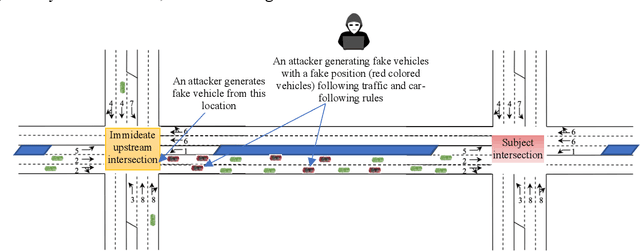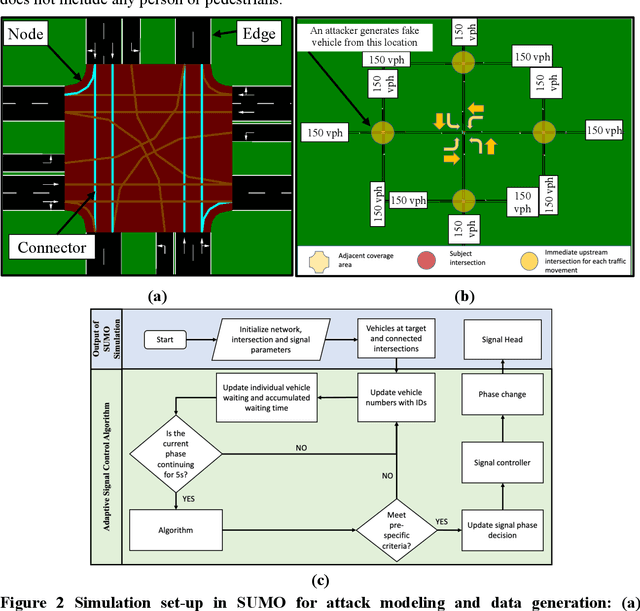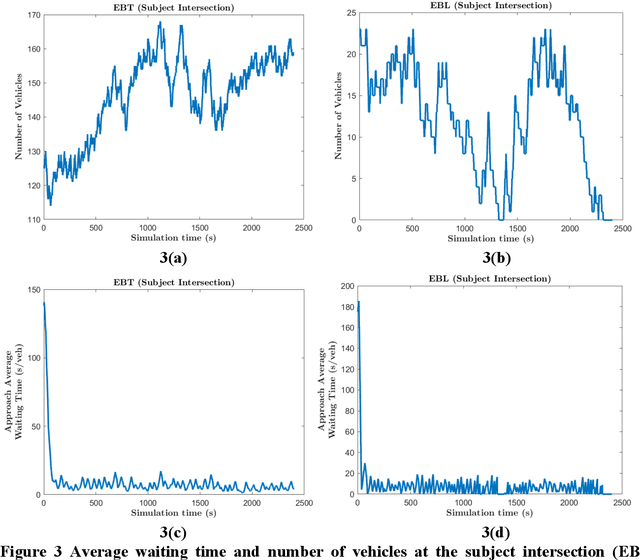Travis Atkison
Reinforcement Learning based Cyberattack Model for Adaptive Traffic Signal Controller in Connected Transportation Systems
Oct 31, 2022Abstract:In a connected transportation system, adaptive traffic signal controllers (ATSC) utilize real-time vehicle trajectory data received from vehicles through wireless connectivity (i.e., connected vehicles) to regulate green time. However, this wirelessly connected ATSC increases cyber-attack surfaces and increases their vulnerability to various cyber-attack modes, which can be leveraged to induce significant congestion in a roadway network. An attacker may receive financial benefits to create such a congestion for a specific roadway. One such mode is a 'sybil' attack in which an attacker creates fake vehicles in the network by generating fake Basic Safety Messages (BSMs) imitating actual connected vehicles following roadway traffic rules. The ultimate goal of an attacker will be to block a route(s) by generating fake or 'sybil' vehicles at a rate such that the signal timing and phasing changes occur without flagging any abrupt change in number of vehicles. Because of the highly non-linear and unpredictable nature of vehicle arrival rates and the ATSC algorithm, it is difficult to find an optimal rate of sybil vehicles, which will be injected from different approaches of an intersection. Thus, it is necessary to develop an intelligent cyber-attack model to prove the existence of such attacks. In this study, a reinforcement learning based cyber-attack model is developed for a waiting time-based ATSC. Specifically, an RL agent is trained to learn an optimal rate of sybil vehicle injection to create congestion for an approach(s). Our analyses revealed that the RL agent can learn an optimal policy for creating an intelligent attack.
An Innovative Attack Modelling and Attack Detection Approach for a Waiting Time-based Adaptive Traffic Signal Controller
Aug 19, 2021



Abstract:An adaptive traffic signal controller (ATSC) combined with a connected vehicle (CV) concept uses real-time vehicle trajectory data to regulate green time and has the ability to reduce intersection waiting time significantly and thereby improve travel time in a signalized corridor. However, the CV-based ATSC increases the size of the surface vulnerable to potential cyber-attack, allowing an attacker to generate disastrous traffic congestion in a roadway network. An attacker can congest a route by generating fake vehicles by maintaining traffic and car-following rules at a slow rate so that the signal timing and phase change without having any abrupt changes in number of vehicles. Because of the adaptive nature of ATSC, it is a challenge to model this kind of attack and also to develop a strategy for detection. This paper introduces an innovative "slow poisoning" cyberattack for a waiting time based ATSC algorithm and a corresponding detection strategy. Thus, the objectives of this paper are to: (i) develop a "slow poisoning" attack generation strategy for an ATSC, and (ii) develop a prediction-based "slow poisoning" attack detection strategy using a recurrent neural network -- i.e., long short-term memory model. We have generated a "slow poisoning" attack modeling strategy using a microscopic traffic simulator -- Simulation of Urban Mobility (SUMO) -- and used generated data from the simulation to develop both the attack model and detection model. Our analyses revealed that the attack strategy is effective in creating a congestion in an approach and detection strategy is able to flag the attack.
 Add to Chrome
Add to Chrome Add to Firefox
Add to Firefox Add to Edge
Add to Edge